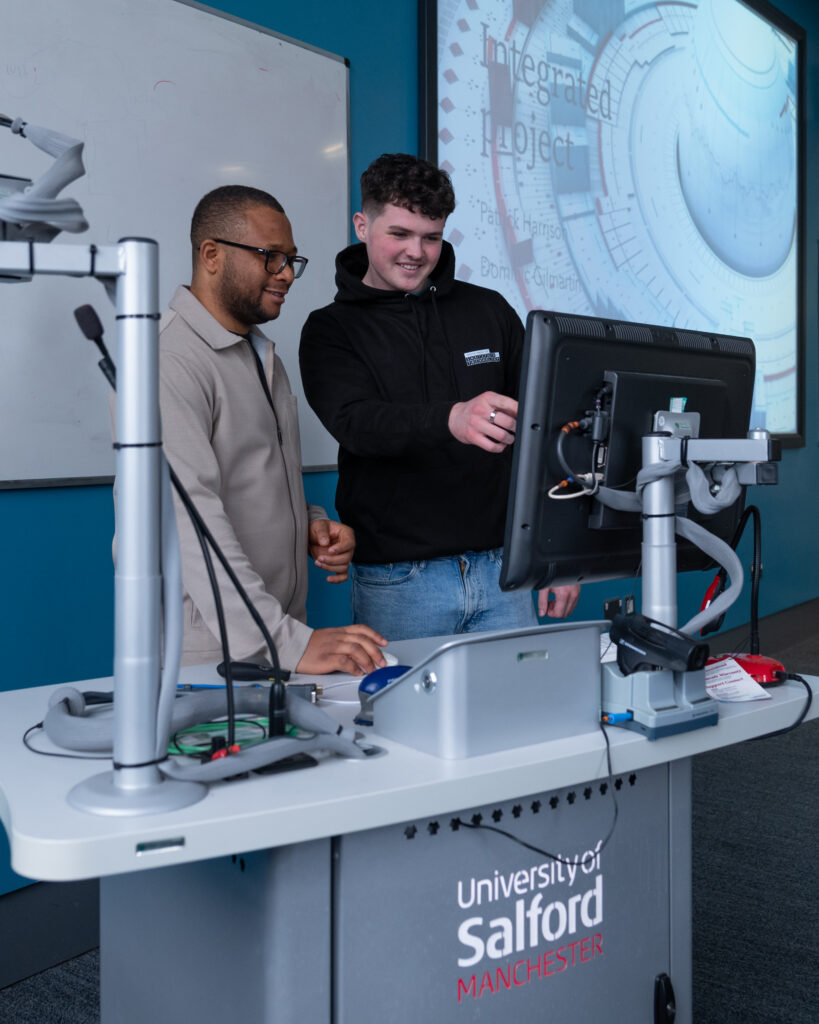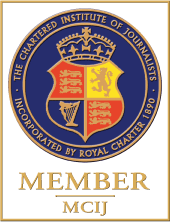By Claire Foreman, Director, Greater Manchester Institute of Technology

When the Greater Manchester Institute of Technology (GMIoT) prepared to welcome its first cohort of students in September 2023, one critical question framed our thinking: what is truly distinctive about being an Institute of Technology (IoT) student?
Across the UK, Institutes of Technology have emerged as a new and necessary solution to address skills shortages in high-demand technical sectors. Some are housed in landmark buildings, purpose-built and equipped with the latest engineering or digital technologies. These spaces play a significant role in showcasing regional investment in technical education. But at GMIoT, our approach has taken a different path, less focused on physical infrastructure, more invested in systemic, collaborative delivery.
A Distributed but Unified Model
GMIoT was created through a partnership of FE colleges, the University of Salford, and strategic employers. We operate on a hub-and-spoke model, with each partner institution upgrading and re-equipping their own STEM teaching environments to meet the needs of IoT students.
The University of Salford, our lead partner, is building a new facility that will serve its own IoT students and also host regional events. Meanwhile, Ada, the National College for Digital Skills, had no Manchester base before IoT funding enabled it to convert a disused Department for Education site in Ancoats into a thriving digital learning hub.
This distributed model is more than a logistical choice; it reflects our commitment to embedding high-quality technical education within existing institutional ecosystems while linking them through a common framework of excellence.
Beyond the Building: Defining the Student Experience
Having high-tech kit is a starting point, not the endpoint. What distinguishes an IoT student experience is not simply where learners study, but how they learn, and how closely that learning is aligned to real industry needs.
Many colleges today aspire to employer-led curricula, live briefs, and enrichment through visits or guest speakers. Yet in practice, these elements can be inconsistent, present in some courses, some years, for some students. Too often, especially at higher education (HE) levels within colleges, these features are deprioritised due to limited scale, staffing pressures, or siloed quality assurance systems.

IoTs like GMIoT were established to break this cycle. We were designed to embed employer engagement, technical rigour, and practical experience into the core of every programme, not as an add-on or aspiration, but as standard.
Building a Talent Pipeline That Works
At the heart of GMIoT’s mission is the commitment to developing a robust talent pipeline for Greater Manchester’s priority sectors. That means students benefit from:
- Regular exposure to industry: From employer-reviewed curricula and real-world assessment tasks to site visits, networking events, and guest speakers, we ensure that learning is informed by the latest in business and technology.
- Teaching by industry-informed staff: Our delivery partners bring both academic expertise and current sector knowledge further enriching the student experience through hands-on employer training. For example, an employer might demonstrate the latest drone surveying technologies or share digital twin modelling, or recommend specialist software for courses; our partners help keep our curriculum industry-relevant and future-focused.
- Access to industry-grade facilities: Our students train with the technologies and tools they’ll encounter in the workplace in new or upgraded workshops and labs. They are also exposed to university research facilities that widens their horizons and provides a glimpse of future technologies they’re likely to encounter in the workplace.
- A shared student identity: Through dual branding, shared induction resources, welcome packs, and community-wide events, we cultivate a sense of belonging that spans campuses and partner institutions.
Systematising Excellence Across the Partnership
To avoid the “postcode lottery” effect in student experience, GMIoT implemented a set of baseline commitments for every programme under its banner. These include:
- Annual employer reviews of course content
- A defined number of assessments based on real industry scenarios
- A pre-planned programme of enrichment activities: guest speakers, industry visits, competitions, and events
Rather than relying on ad-hoc arrangements, we organise employer engagement across all providers and subjects. So instead of last minute invites to guest speakers who are already familiar to students, we deliver a planned and considered selection of fresh employer contributions aligned to current trends. For example, bringing in a guest speaker to discuss a new process of manufacture being trialled that is not yet part of a given course requirement, a visit to a modular build production site during a modern methods of construction module, or a visit to a robotics centre during an AI module.

We also support partner staff by centrally arranging many of these opportunities, helping to mitigate workload and ensure equitable access across delivery sites.
Creating Cross-Provider Cohesion
We knew from the outset that IoT students needed to feel part of something beyond their individual course or college. So we developed a shared Welcome Campaign, delivered at induction across all providers. Students receive branded materials and a launch presentation that introduces them to the wider GMIoT network and what it means to be an IoT student.
This branding is not cosmetic, it’s part of a broader effort to develop student identity and community. We organise joint events, such as our cross-partner student conference, which began in year one with 60 students and grew significantly in year two. Students benefit from peer networking, cross-sector insights, and collaborative learning that would not be possible within isolated cohorts.
We’ve also made available a year-round calendar of enrichment opportunities, including visits to university research facilities and employer sites. Students from colleges such as Wigan & Leigh and Tameside now regularly access experiences such as Salford University’s Energy House, Siemens’ digitally twinned smart factory, or the North of England Robotics Innovation Centre.
Equipping Students for a Changing Workforce
Recognising the evolving demands of modern employers, and the wider skillset HE students need as a result, we introduced enhancement themes. Our current theme is Sustainability, which includes:
- Carbon Literacy training, led by trained staff within partner institutions
- A student competition and themed conference sessions
- A curated set of web-based resources and tools
- LinkedIn workshops to help students present their achievements and sustainability credentials
These themes go beyond subject knowledge. They develop critical thinking, digital skills, and workplace readiness, traits increasingly demanded by employers.
Evaluating Impact, Evolving Practice
At the end of year one, we undertook a structured review of the student experience. With support from the Gatsby Foundation and consultant Gill Scott, we collaborated with other IoTs to explore what makes a student journey truly distinctive.

Workshops with delivery staff, support teams and leadership proved valuable not only for research but also for building shared understanding and buy-in. From this, we developed a draft Statement of Intent and accompanying quality framework to underpin and guide our work.
Rather than adding administrative burden, the framework provides a structured lens for reflective improvement. We’ve resisted a rigid entitlement approach, recognising the diversity of study modes, but rather, the framework acts as a catalyst for conversations around quality and ambition.
A Model for Regional Growth and Inclusion
Institutes of Technology were never intended to replicate traditional HE or FE institutions. Instead, they were created to fill a critical space: employer-led, technically focused higher education that serves regional economies and opens new doors for students who may not have considered a university pathway.
In Greater Manchester, where our economy is shifting towards clean growth, digital innovation, and advanced manufacturing, the need for a skilled technical workforce is urgent. GMIoT aims to meet that demand not only by training individuals but by working in deep partnership with industry to co-create the skills solutions of tomorrow.
Through a shared ethos, consistent delivery standards, and a relentless focus on employability, we believe we are well on the way to delivering on this mission.
Looking Ahead
We don’t claim to have all the answers. The GMIoT model is still evolving, and must continue to do so if it is to meet the changing needs of students, employers, and the wider regional economy. But we are confident that our model – collaborative, distributed, employer-aligned, and student-focused – offers something genuinely distinctive.
By building a cross-sector partnership with shared values and high expectations, we’re not just educating students. We’re laying the groundwork for a stronger, more inclusive, and more prosperous Greater Manchester, powered by the next generation of technically skilled, work-ready professionals.







Recent Comments